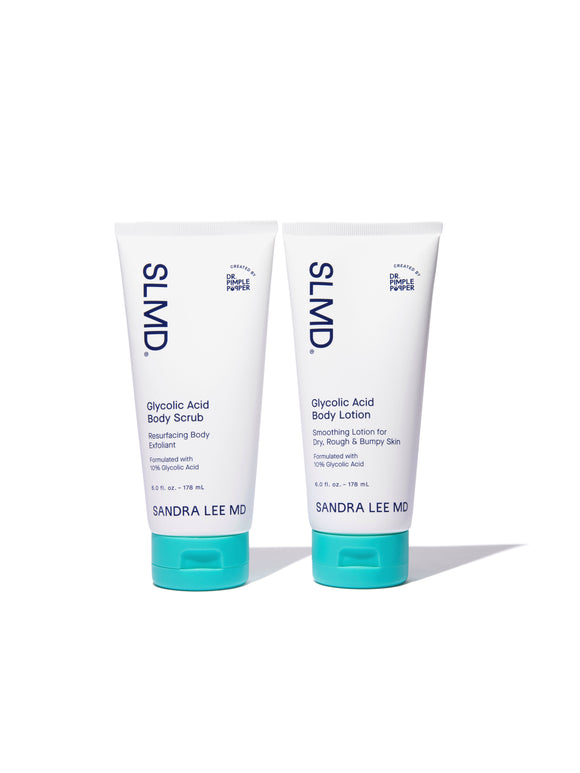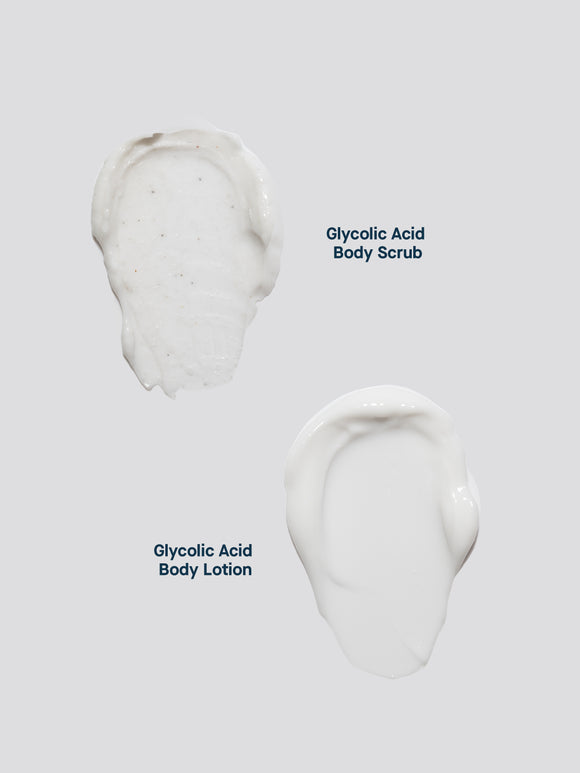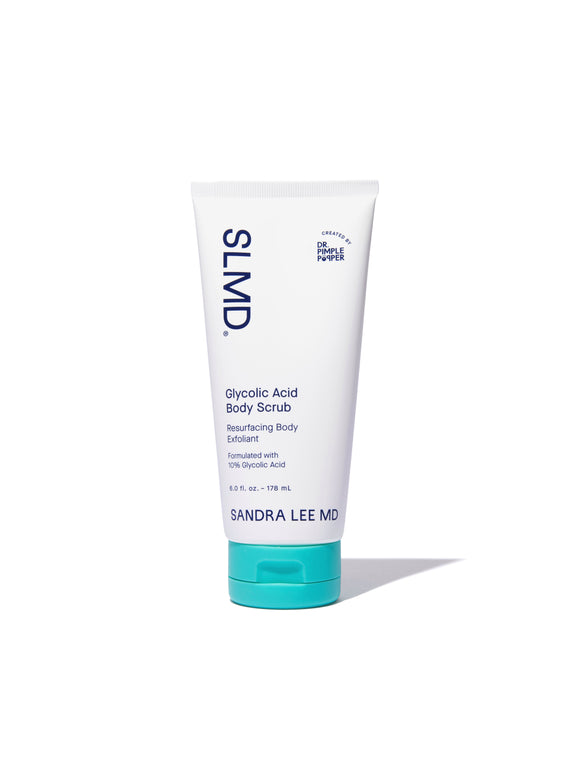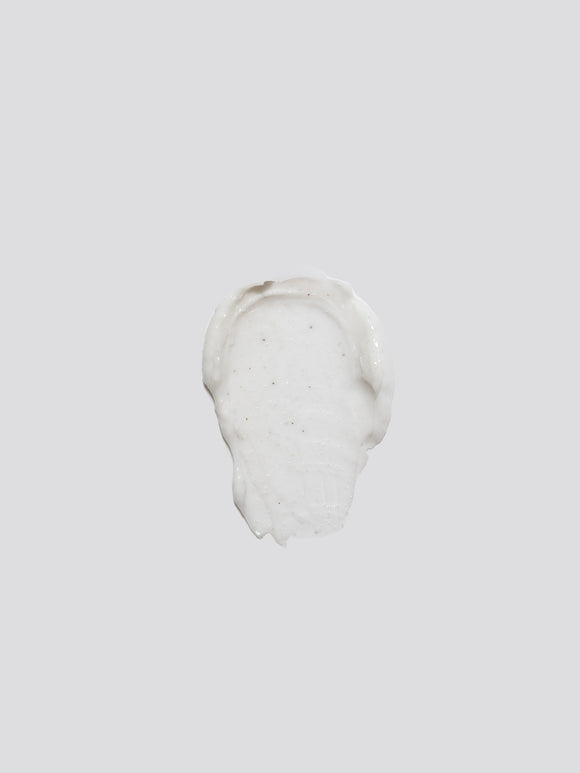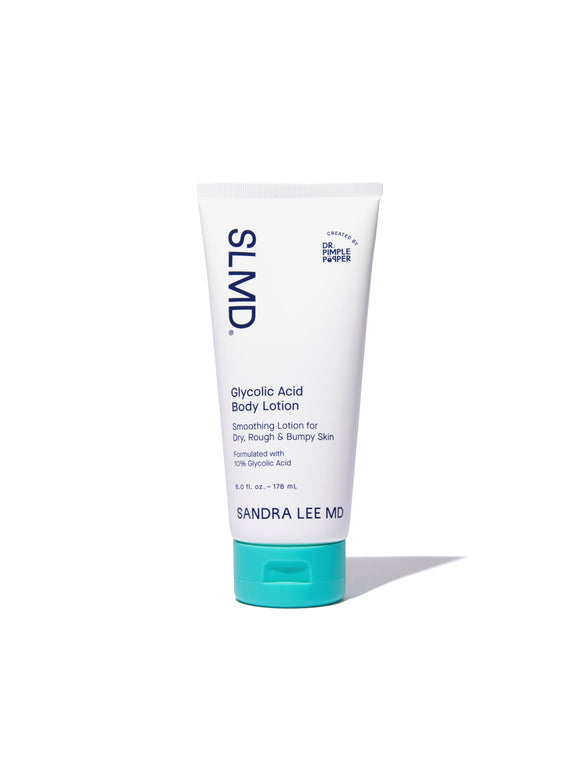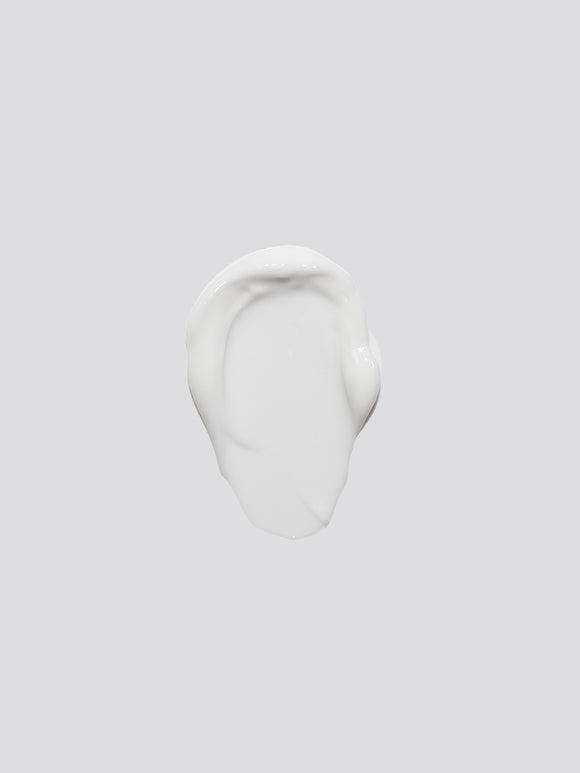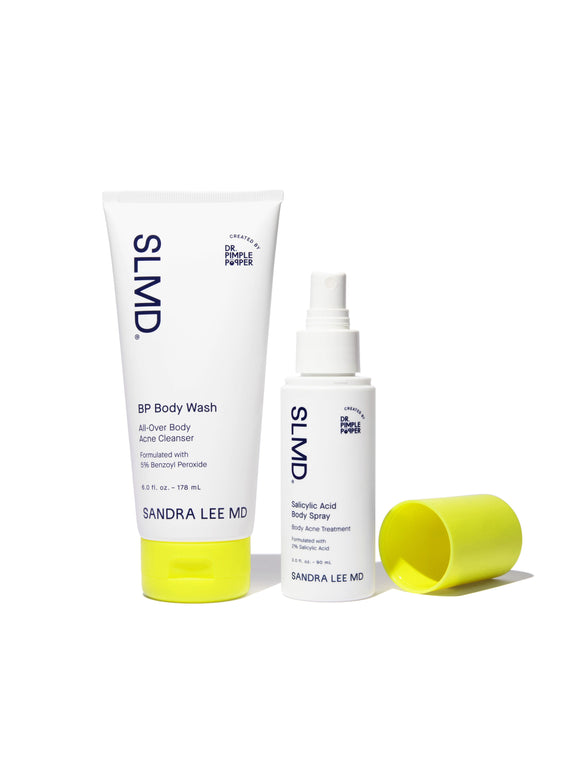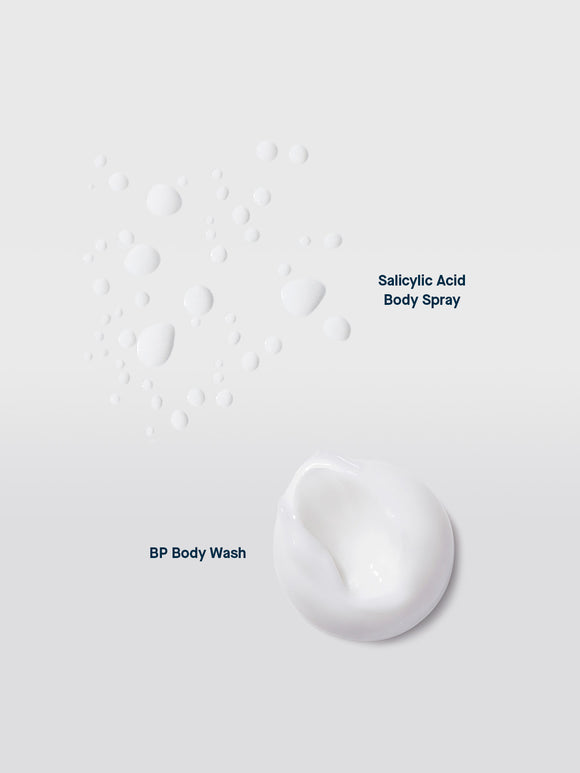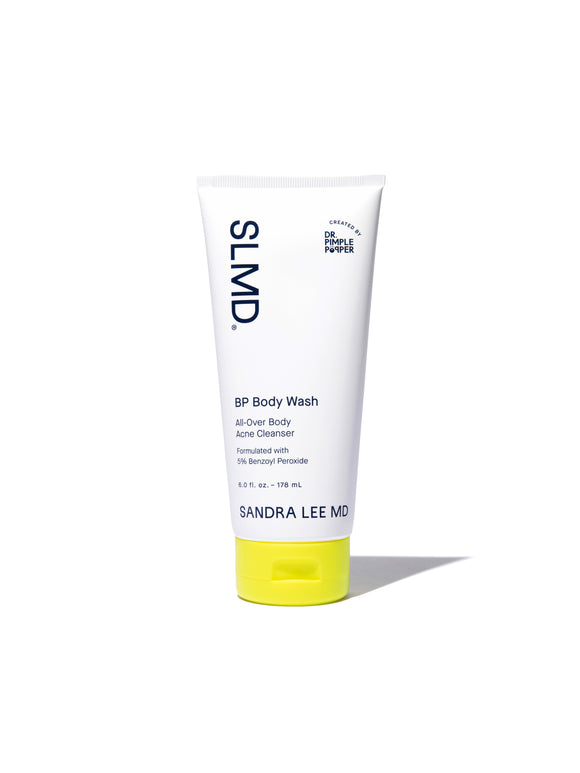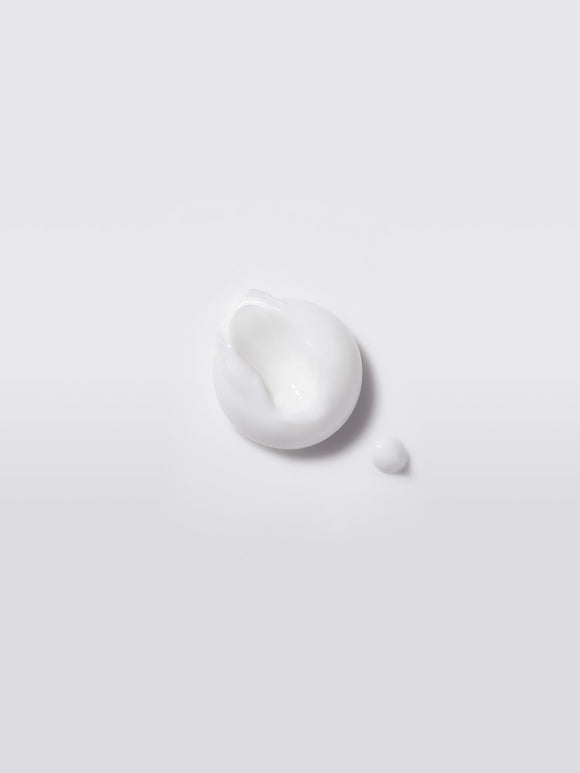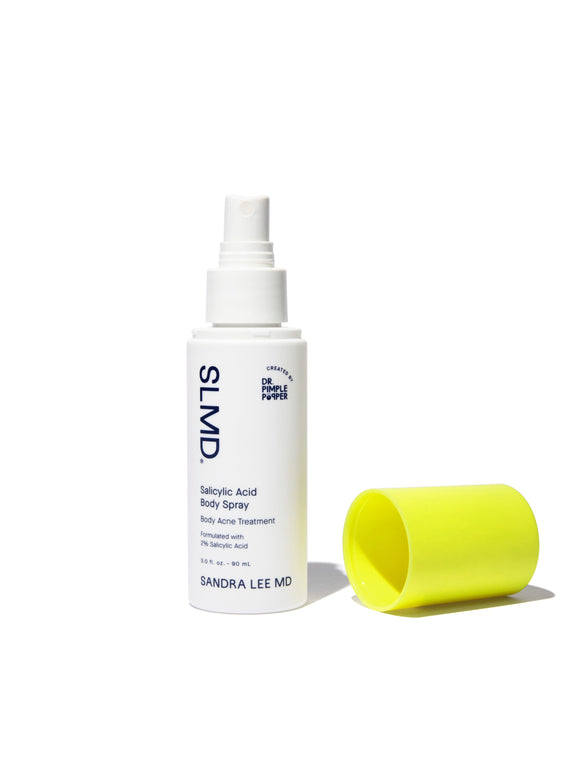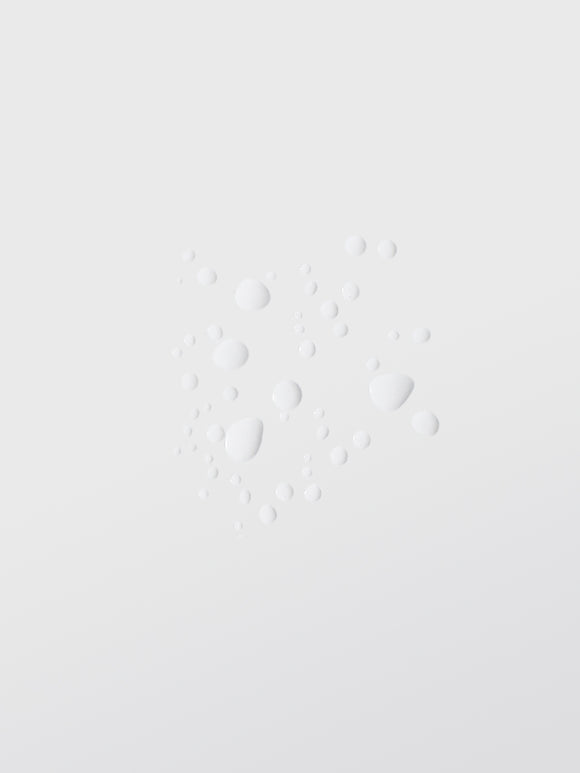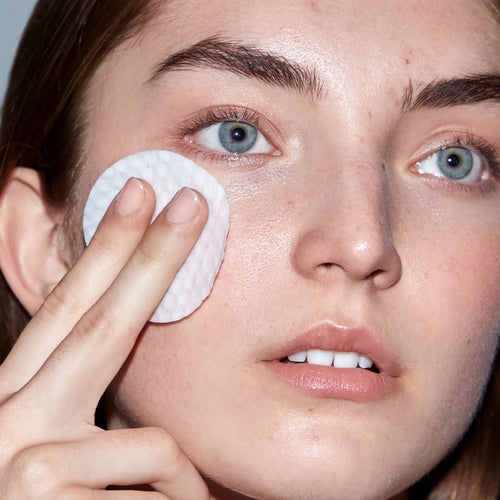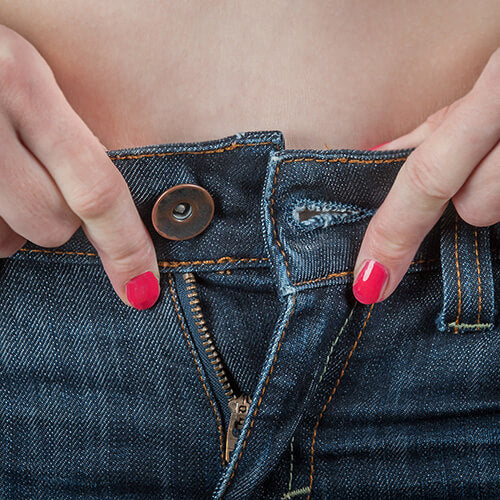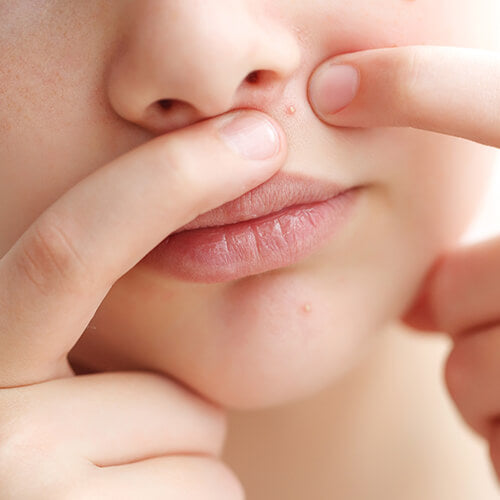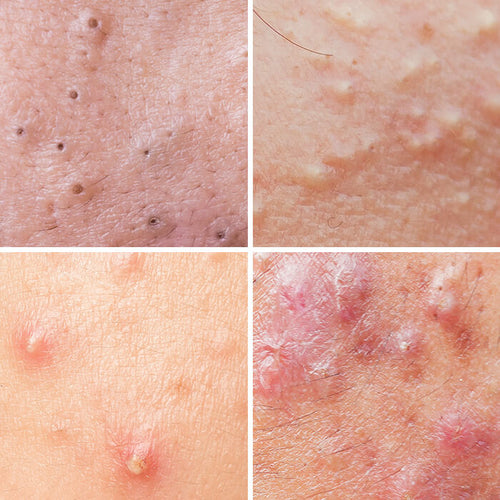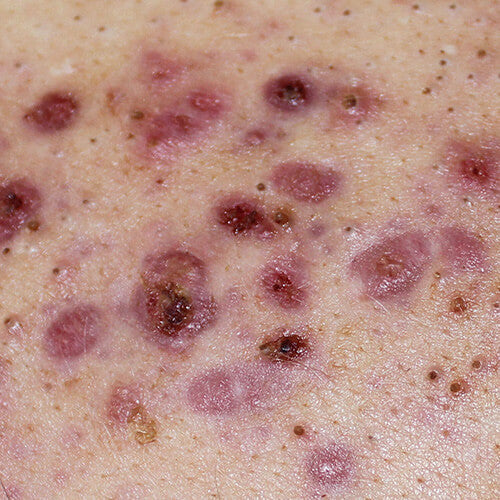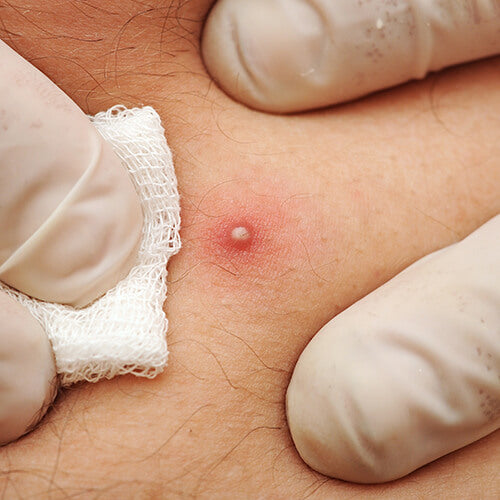
Body Bumps That Look Like Acne — But Aren’t
Body acne most commonly appears across the neck, chest, shoulders — even the buttocks and inner thighs. Here, hints on how to tell if it's a pimple, or something else.
Published:
4 minute read
If you experience facial acne, chances are you’re also familiar with body breakouts. Whether it’s a typical case of acne vulgaris or the result of friction — aka acne mechanica — body acne most commonly appears across the neck, chest, shoulders — even the buttocks and inner thighs.
But what about those hard-to-identify body bumps? Maybe they seem too small to be a pimple, or they don’t behave like a typical pustule if you squeeze them (please don’t). Here, we break down some of the most common types of body bumps that aren’t acne.
Ingrown hairs

Sometimes, a hair grows sideways or downwards and gets trapped beneath the skin. Ingrown hairs can be relatively obvious: when you look closely, you can see a tiny hair inside the bump.
But when the hair is trapped more deeply under the skin, and the bump becomes red and painful, it’s easy to mistake it for a pimple.
What to do about ingrown hairs
Don’t squeeze. If the hair is very superficial, you can follow Dr. Pimple Popper’s advice for extracting the ingrown hair safely. If it’s too deep, dab on some spot treatment (like SLMD BP Acne Spot Treatment or Salicylic Acid Spot Treatment). If it doesn’t clear up within 10–14 days, ask your dermatologist.
Dr. Pimple Popper's Ingrown Hair Picks
Keratosis pilaris

Most of the time, it’s not too difficult to tell the difference between acne whiteheads and the tiny, rough bumps of keratosis pilaris (aka "strawberry skin"). These are hardened plugs of keratin that block the pore opening and tend to appear in clusters on the backs of the upper arms. Sometimes, however, they show up alone on the cheeks or buttocks, and can resemble a pimple. But if you’ve got dry skin, it’s most likely not acne, but KP.
What to do about keratosis pilaris
Don’t pick at these bumps! It’s best to exfoliate and moisturize with products that contain alpha hydroxy acids. SLMD Body Smoothing System is formulated with glycolic acid, niacinamide to brighten and resurface and aloe and hyaluronic acid to soften and smooth.
Dr. Pimple Popper's KP Picks
Razor burn
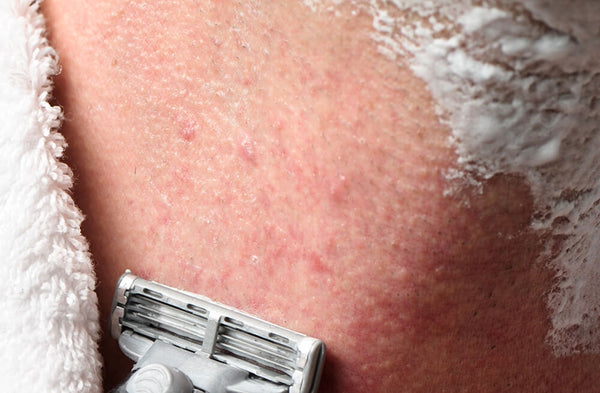
Also known as razor bumps, this is a cluster of irritated hair follicles that is not infected. Razor burn can happen any time the skin gets irritated from manipulating the hair, but poor shaving techniques will increase your risk.
What to do about razor burn
Slough off dead skin before you shave with a gentle exfoliant like SLMD Glycolic Acid Body Scrub, which contains both physical and chemical exfoliants. Make sure you’re using a clean razor and following the direction of the hair growth. Avoid using heavy, occlusive creams or lotions in recently shaved areas.
Folliculitis
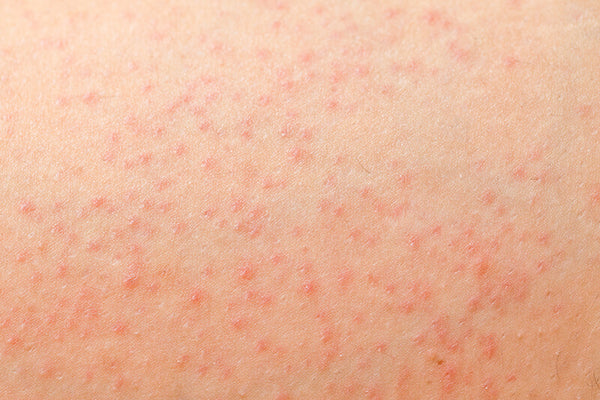
Though it can masquerade as average razor burn at first, folliculitis (sometimes called fungal acne), is more serious. This is an infection of the hair follicles, caused by various microbes including the Malassezia yeast. The lesions can resemble clusters of acne whiteheads, though they tend to be more uniform in size, and might be itchy.
What to do about folliculitis
If you’ve been trying to manage clusters of whiteheads with conventional acne treatments like benzoyl peroxide with no success, it could be folliculitis. Call your dermatologist and have it checked out.
Molluscum contagiosum

Sometimes called water warts, these pink or skin-colored bumps — more common in kids than adults — are caused by a pox virus. Molluscum contagiosum can resemble acne when the bumps are quite small. But when they grow larger (up to around a quarter inch), a small depression may appear in the center, giving the bump a doughnut-like appearance. They tend to go away on their own in time, but may linger for several years before the infection disappears.
What to do about water warts
Molluscum contagiosum is contagious, so avoid scratching or picking, and don’t touch others with infected skin (or share towels). Contact your dermatologist, who may (or may not) recommend treating the virus with various topical drugs or perhaps cryotherapy, depending on the severity.
Staphylococcus aureus
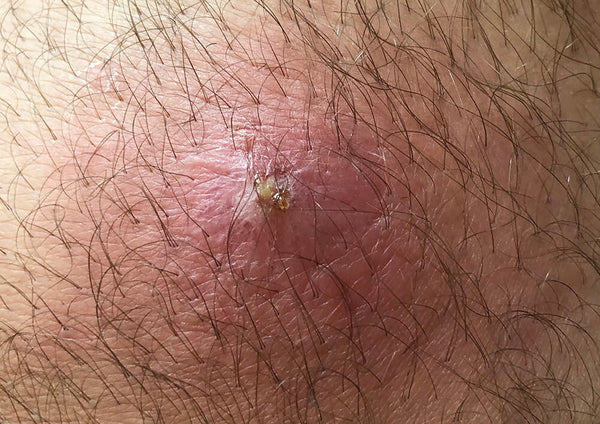
Most commonly called simply a staph infection, these start out as red, pimply bumps that resemble acne. Caused by a bacteria that commonly lives on the skin, a staph infection creates a swollen, painful bump with a white center. As the infection progresses, it will spread, sometimes developing crusty, oozing lesions.
What to do about staph
If you suspect staph, call your dermatologist right away. An untreated Staphylococcus aureus infection could turn into a serious medical emergency if it gets into your bloodstream. Your doctor can prescribe a course of antibiotics to treat your particular variety of staph infection.
Basal cell carcinoma
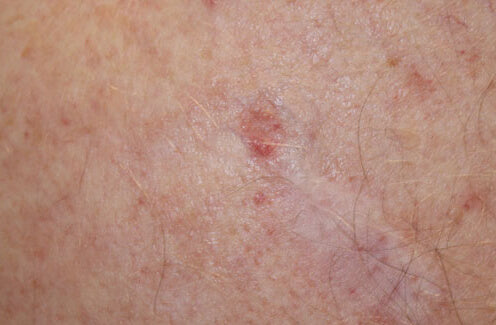
The most common type of skin cancer, basal cell carcinoma, can resemble a pimple during its early stages. It may look like a small red bump, and may ooze pus like a pimple. However, basal cell lesions do not go away after they pop — they continue to grow, slowly over time.
What to do about skin cancer
If you have a pimple-like growth that persists after a couple of weeks, it’s best to have it checked out by a dermatologist. While basal cell carcinoma is typically slow growing and generally does not spread to other parts of the body, early detection and removal ensures your best prognosis.

Dr. Lee's Last Word
Pimple-like bumps that pop up on the body are rarely serious. If you have acne on your face, it’s probably going to show up elsewhere, too — but it could also be an ingrown hair, keratosis pilaris, or any number of things. Please don’t pick or squeeze your skin, which could lead to infection or even scarring. If your bump doesn’t get better within a week or so (or it gets worse!), contact your dermatologist.





